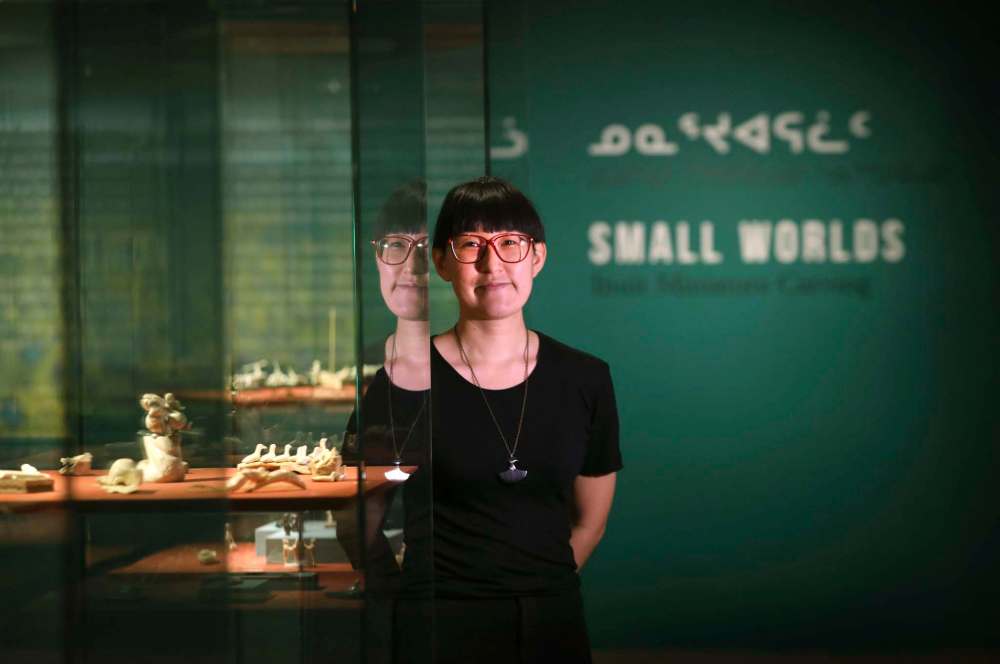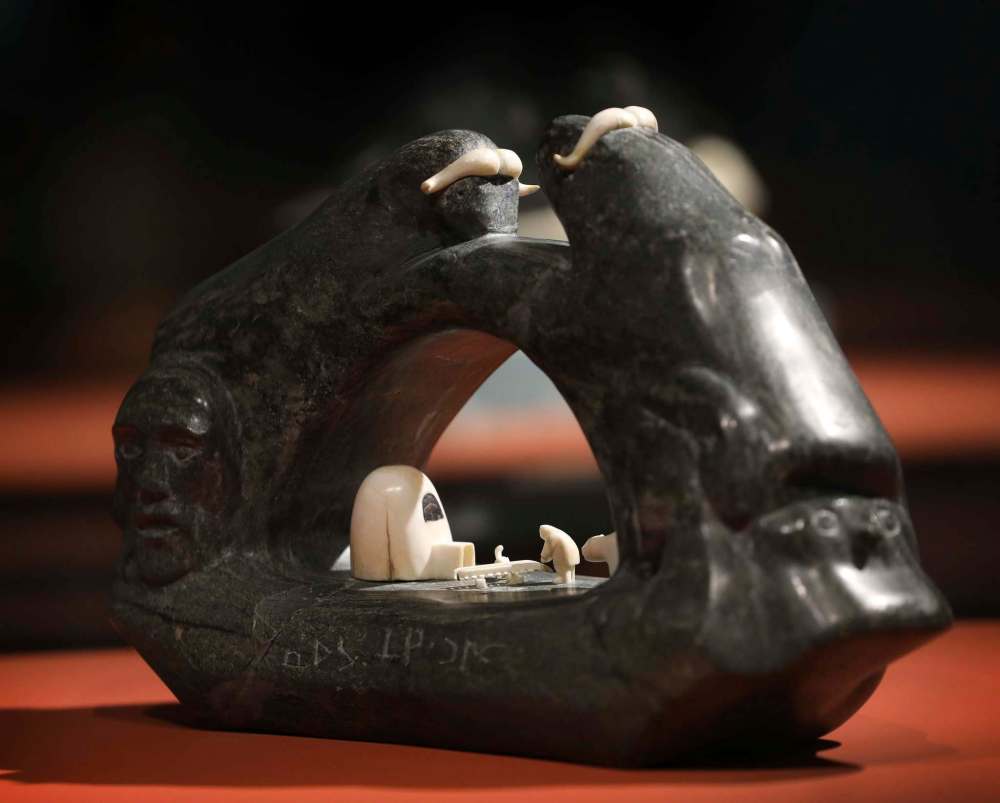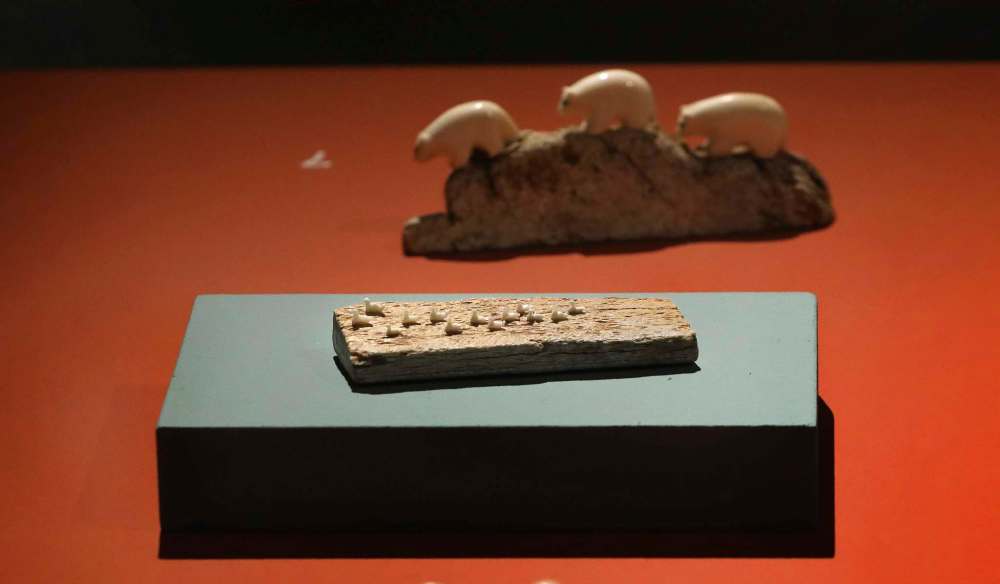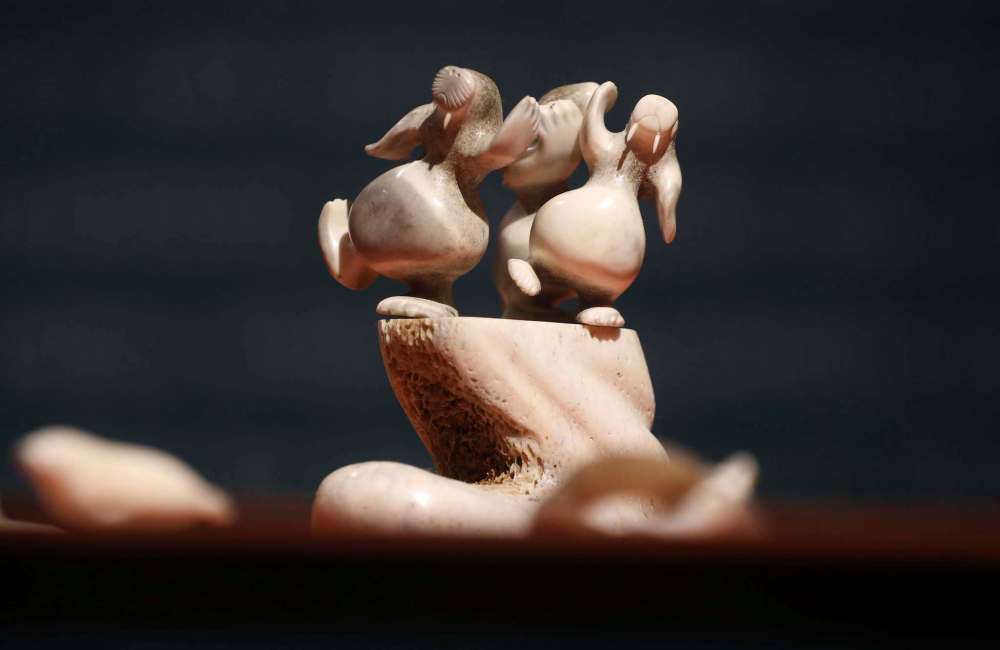Miniature art, big stories
Inuit artists recreate landscapes and oral histories in pocket-sized carvings
Advertisement
Read this article for free:
or
Already have an account? Log in here »
To continue reading, please subscribe:
Monthly Digital Subscription
$0 for the first 4 weeks*
- Enjoy unlimited reading on winnipegfreepress.com
- Read the E-Edition, our digital replica newspaper
- Access News Break, our award-winning app
- Play interactive puzzles
*No charge for 4 weeks then price increases to the regular rate of $19.00 plus GST every four weeks. Offer available to new and qualified returning subscribers only. Cancel any time.
Monthly Digital Subscription
$4.75/week*
- Enjoy unlimited reading on winnipegfreepress.com
- Read the E-Edition, our digital replica newspaper
- Access News Break, our award-winning app
- Play interactive puzzles
*Billed as $19 plus GST every four weeks. Cancel any time.
To continue reading, please subscribe:
Add Free Press access to your Brandon Sun subscription for only an additional
$1 for the first 4 weeks*
*Your next subscription payment will increase by $1.00 and you will be charged $16.99 plus GST for four weeks. After four weeks, your payment will increase to $23.99 plus GST every four weeks.
Read unlimited articles for free today:
or
Already have an account? Log in here »
Hey there, time traveller!
This article was published 12/08/2019 (2305 days ago), so information in it may no longer be current.
When you think of the north, you tend to think big. Vast panoramas of snow and ocean, hulking glaciers, massive polar bears, huge whales.
So it’s incredible, then, when you encounter the work of Inuit artists who were able to capture the enormity of those scenes in hyper-detailed, pocket-sized carvings from ivory, stone, antler, bone and sinew. An entire way of life, captured in an artwork only a few centimetres high.
More than 100 such miniature carvings compose the aptly titled Small Worlds exhibition, on now at the Winnipeg Art Gallery.

“Many of these pieces did have that idea in mind too, that they were representing these small worlds,” says Jocelyn Piirainen, the WAG’s assistant curator of Inuit art. This is the 31-year-old’s first exhibition in her new role, which is also the first such position in Canada to be held by an Inuk.
Piirainen was keen to work with the miniatures — many of which are drawn from the Government of Nunavut Fine Arts Collection on long-term loan to the WAG — as a counterpoint to some of the larger carvings on display in other galleries.
“They were really wonderful to see,” she says. “The amount of detail that go into them, the expression. You can see the joy and happiness in them.”
Artists from 19 different communities across Nunavut are represented in this show, including works from a few unidentified artists. Most of the pieces, which depict scenes and animals from day-to-day life, were created between 1950 and 1970. There’s a striking amount of movement in these tiny works; whales dive and birds soar while little figures hunt and fish.
In Ulilak’s 1959 ivory and stone work, Man and Qayaq with Two Swimming Caribou, the caribou are carved in such a way that whatever surface they are placed on becomes a placid body of water.
Sometimes, the shape and form of a stone or piece of bone would dictate the piece, Piirainen says. A jawbone might become a rugged shoreline; the smooth contours of the stone might suggest the backside of a walrus or whale. Ivory is, by far and away, the most popular medium.

The carvings also tell stories. Enook Manomie’s 1976 work, created from ivory and sinew, is inspired by the Inuit legend, How The Narwhal Got Its Tusk.
There are variations of this legend, but most involve a mother or grandmother whose long braid becomes the narwhal’s distinctive spiralled tusk.
“Most of the Inuit storytelling has been oral tradition,” Piirainen says. “Seeing them reflected back in these miniatures is so wonderful to keep that tradition going.”
She notes a shift in Inuit carving, from utilitarian carving to create tools — such as the qulliq, the stone lamp still used today — to carving as a fine art. The miniatures were often created to be traded or sold to a Hudson’s Bay Company post or Inuit-owned co-op.
“I think one of the main reasons the miniature was maybe preferred was because of its size. Many Inuit were travelling, and you could stash them away. But I think also it was maybe the challenge of working at such a small scale and really perfecting the detail of each piece,” Piirainen says.
She points to one piece that features a flock of tiny — we’re talking top-of-your-pinkie-fingernail tiny — ivory birds nesting in what look like cliffs jutting out from the water.
“You can imagine the cliffs. If you were out on the water kayaking, this is probably something you’d see from afar — all these nesting birds. For this artist, I think it was that test of skill,” she says. (The exhibition is equipped with two iPads so visitors can also take a closer look at the carvings.)

Before coming to Winnipeg, Piirainen studied film in Ottawa, but was always interested in curating Inuit art. She has roots in the north; she has fond memories of childhood years spent in Cambridge Bay, Nunavut. She’s looking forward to the 2020 opening of the Inuit Art Centre, and the curatorial opportunities her new role will present.
One of her goals is to get more Inuit involved and connect with Winnipeg’s urban Inuit population.
“I think we’re starting to see this shift with institutions — not just in Canada, but elsewhere as well — to having that representation and making sure Indigenous people and Inuit are involved in telling their stories in relation to the artwork,” she says. “I think it’s a really great opportunity for me to be here. I realize it’s a huge thing, and I’m super happy to be here.”
jen.zoratti@freepress.mb.ca
Twitter: @JenZoratti

Jen Zoratti is a columnist and feature writer working in the Arts & Life department, as well as the author of the weekly newsletter NEXT. A National Newspaper Award finalist for arts and entertainment writing, Jen is a graduate of the Creative Communications program at RRC Polytech and was a music writer before joining the Free Press in 2013. Read more about Jen.
Every piece of reporting Jen produces is reviewed by an editing team before it is posted online or published in print – part of the Free Press‘s tradition, since 1872, of producing reliable independent journalism. Read more about Free Press’s history and mandate, and learn how our newsroom operates.
Our newsroom depends on a growing audience of readers to power our journalism. If you are not a paid reader, please consider becoming a subscriber.
Our newsroom depends on its audience of readers to power our journalism. Thank you for your support.


